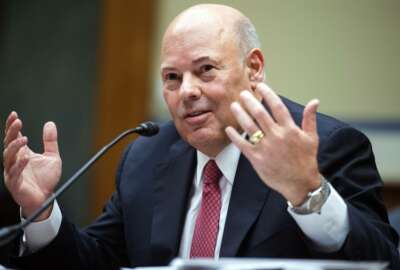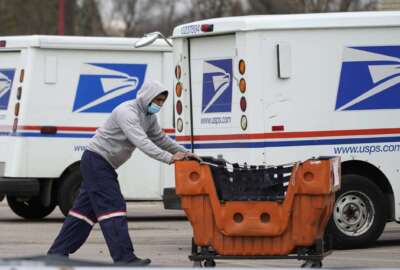USPS sets slower delivery standard for small packages, starting May 1
The Postal Service is moving ahead with plans to implement a slower delivery standard for nearly a third of small, lightweight packages.
The Postal Service is moving ahead with plans to implement a slower delivery standard for nearly a third of small, lightweight packages.
USPS announced Monday it will implement its new service standard for its first-class package service starting May 1.
The agency expects the new service standard will impact 32% of first-class package service volume. The new standard will allow USPS to add an extra day or two to deliver these packages and still consider them on-time.
Packages sent via first-class package service weigh less than a pound. Businesses rely on first-class package service for items that include small electronics and prescription drugs.
USPS implemented slower delivery standards for nearly 40% of first-class mail last fall.
The agency said the service standards are “delivery benchmarks” for how long customers can expect USPS to deliver different types of mail and packages, from their point of origin to their destination.
Service standards, USPS added, are not the same as percentage targets or actual measured service performance.
The agency initially considered implementing the new first-class package service standard on Oct. 1, but postponed the start date.
The service standards are just one element of the agency’s 10-year reform plan released last year. Postmaster General Louis DeJoy said in a recent interview that USPS, more than one year under the plan, is on track to have an “exponentially improved year,” compared to 15 consecutive years of net losses.
USPS is implementing these standards despite some concerns from its regulator.
The Postal Regulatory Commission, in an advisory opinion last September, warned new service standards for the Postal Service’s first-class package service would not “substantially affect the Postal Service’s overall financial condition.”
These conclusions echo the commission’s non-binding advisory opinion from July, when it found plans to slow first-class mail wouldn’t result in “much improvement” to its long-term financial troubles.
The commission found USPS didn’t conduct a detailed analysis of how the service standards would impact customers, such as those who rely on the first-class package service to receive prescription drugs.
USPS, however, estimates that nearly all prescription drugs currently subject to two-day delivery and the majority of prescriptions taking three days to deliver would remain unchanged under the new standards.
The new standard will allow the agency to shift more of its volume onto its own ground transportation delivery network, rather than rely on contracted air transportation. The agency said air transportation was growing too expensive and wasn’t providing reliable service.
“Modifying these service standards will allow for additional transport time for long-distance package deliveries and increased network efficiencies,” the agency wrote.
USPS expects the new standard would save the agency $42 million a year and would allow it to provide more reliable and consistent package delivery. The agency expects the changes won’t significantly hurt package volume, and may actually result in modest growth.
Slower service standards for first-class packages will likely improve on-time metrics, but the PRC said USPS hasn’t given a firm estimate of when it will meet its 95% on-time delivery goal, and hasn’t set more realistic delivery goals in the interim.
While the new service standard would result in slower delivery for small packages that travel the furthest, USPS expects about 4% of its first-class package volume traveling relatively short distances will arrive one day faster under these new standards.
DeJoy, in a statement, said the service standard is a “key growth element and enabler of our 10-year plan.”
“This action will contribute to our cost savings efforts and improve our reliability across all product classes, including our growing package market,” DeJoy said.
“By implementing the elements of our 10-year plan, we will deliver the consistent, reliable service that the American people and our customers expect and deserve and grow package volume, spurring revenue growth that can be invested back into the Postal Service.”
USPS is also removing an extra day for priority mail transported via ground. The extra day was temporarily put in place in April 2020 to account for ongoing global supply chain, transportation and employee availability challenges across our network posed by the COVID-19 pandemic.
However, given continued high demand on the air network, the Postal Service is still allowing an extra day for priority mail transported going through air transportation, “until the reliability of our key providers improves,” the agency wrote.
Copyright © 2025 Federal News Network. All rights reserved. This website is not intended for users located within the European Economic Area.
Jory Heckman is a reporter at Federal News Network covering U.S. Postal Service, IRS, big data and technology issues.
Follow @jheckmanWFED






